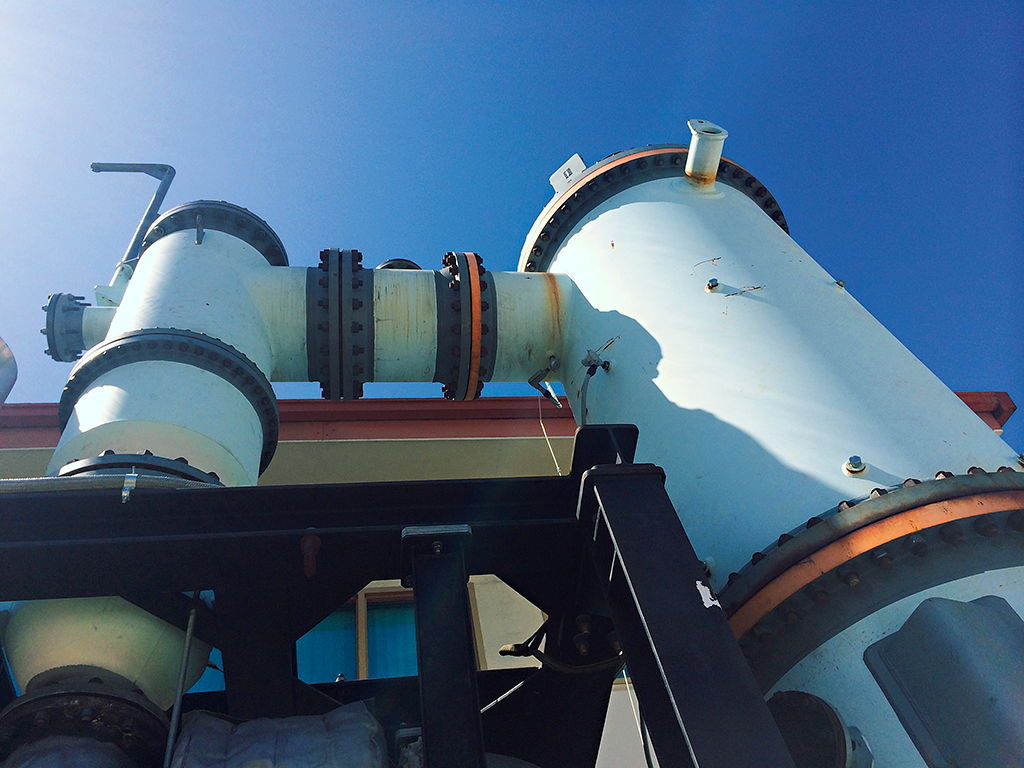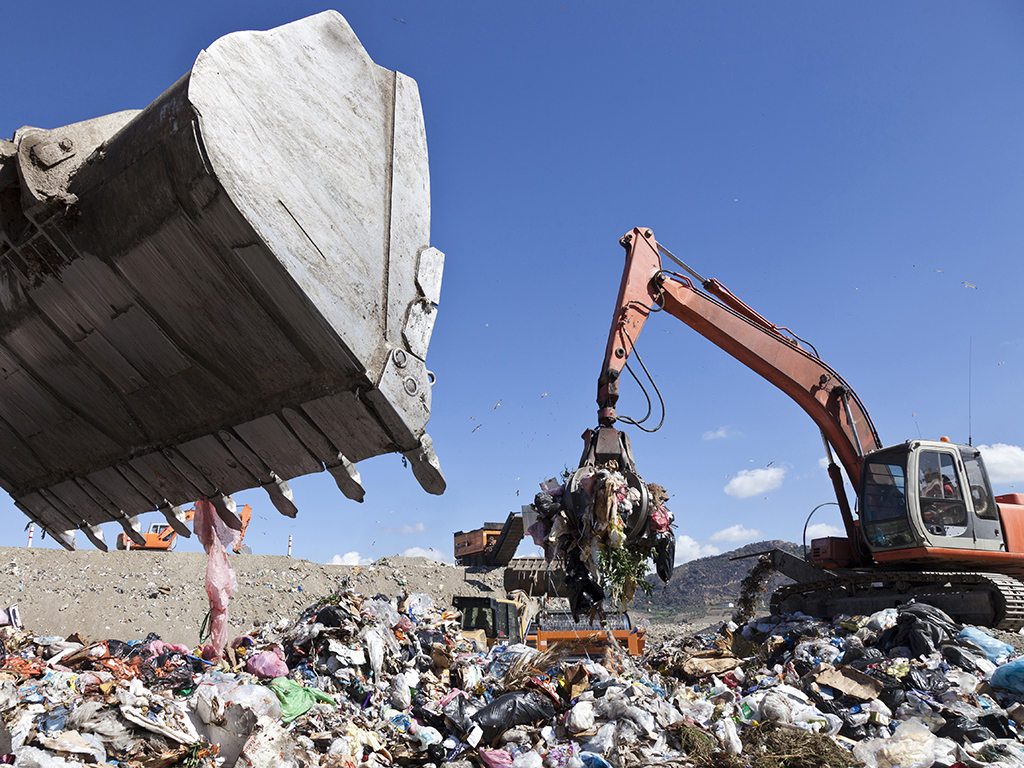Converting waste gas to energy
[I]ndividuals, companies and nations are exposed to more environmental risks than ever before
In recent years, pressure has been mounting on key industry figures to turn their attentions to climate change, and, in the process of doing so, take a stand against rising emissions. However, the focus does not rest solely on reducing their contributions, but on devising solutions to the challenges presented, not least by converting waste gas to energy.
Surging carbon dioxide (CO2) levels have pushed greenhouse gas levels in the atmosphere to new heights, and the results mean that individuals, companies and nations are exposed to more environmental risks than ever before. Sea levels are rising and natural disasters are fast becoming a regular occurrence, with the threats facing those in the worst affected areas nearing on unmanageable extremes. Recent studies have also shown the risks facing the global population to be greater even than previously thought, with food supply, human health and economic development among the worst hit areas.
Of the contributors to global warming, industry accounts for a significant share, particularly in oil and gas. And with fossil fuel consumption on the rise and developing nations turning up the dial on non-renewable supply, without first managing the situation, emissions are set to continue on a steep upwards curve. On the other hand, oil and gas companies and their partners are leading the charge, in terms of developing new and innovative solutions, and, in the case of Ener-Core, converting waste gas to energy.
With CO2 responsible for 80 percent of the increase in warming, according to some reports, and methane, equivalent to as much as a quarter of manmade emissions, turning the problem into part of the solution is an attractive proposition. With much of the coverage focusing on the negative side of climate change, it’s time that those whose business it is to provide solutions are given more of a platform.
Implications
2012
Year of Ener-Core’s inception
$75bn
Amount Ener-Core estimates the market potential for waste-gas conversion technology to be
A great deal has been made of the impact of climate change on society and the economy in recent years, particularly with regards to coastal populations and those living in or at risk of poverty. However, the implications of climate change just as easily apply to companies whose bottom lines have been hit by rising emissions, either directly or indirectly.
Climate-smart companies have been quick to identify the risks associated with climate change and, in doing so, gain an advantage over their closest competitors, while those unwilling to adapt will fall by the wayside. Only through adaptation will companies overcome the many challenges – either regulatory or structural – that accompany rising emissions, and in choosing to pursue innovative technologies, such as converting gas to energy, firms will more easily navigate a much-changed climate.
Reports suggest that far too many in the corporate world are failing to think long-term about their strategy and properly engage with the environmental risks facing their supply chains. And in a time when information on the issue is widespread and the challenges well documented, there are no excuses for companies to fail on this issue.
However, even those well-versed in the situation at hand are struggling to meet often-expensive compliance costs and increasingly stringent environmental regulations. Ambitious emissions targets set out by choice governments, along with pressure from consumers to mitigate climate change, have forced businesses to spend more on emitting less, to the detriment of their bottom lines in the short-term.
Choosing to meet these targets by pursuing radical new strategies, such as converting waste gas into energy, is not without extra cost. However the financial repercussions in the immediate-term will offset the damage in the long-term.
Opportunities

Ener-Core’s Gradual Oxidizer at work
Ener-Core is proof that reliable energy can be recovered from waste gases
Although most of the focus so far has fallen on the impact of climate change on day-to-day operations, rising emissions have also brought with the new strategic opportunities for enterprising firms. Converting waste gas to energy is perhaps the most significant opportunity on this front, and studies into the practice show that the process could meet a sizeable share of the world’s electricity needs. Studies, cited by Ener-Core, show that three percent of energy consumption can be satisfied by converting waste gas to energy, and the realisation has led many in oil and gas to make comprehensive changes to how it is they generate power.
Ener-Core is proof that reliable energy can be recovered from waste gases, and by various different methods. The technologies on the market number in the many, though all involve exploiting useful residual waste from the fossil fuel burning process. Only by harnessing the energy that exists here countries can more easily reduce their dependency on energy imports and companies diversify their production capacity.
The benefits of converting waste gas to energy are two-fold in that companies can both commercialise air pollution and also reduce emissions. Arguably the biggest benefit for corporate names is that reduced emissions mean that they can escape financial penalties and the stigmatism that accompanies inaction on climate change.
Clearly the opportunities are huge for those choosing to incorporate the technology, yet the costs associated with building and maintaining the infrastructure are enough to turn more cautious companies off to the idea. The role of enterprises such as Ener-Core, whose job it is to design and manufacture new technologies from otherwise unusable gases, is vital in making these processes more affordable and easy to implement. By partnering with firms much like Ener-Core, oil and gas companies can more easily control their emissions and shield themselves from criticism.
Ener-Core
480 billion cubic metres
Amount of gas released into the atmosphere each year
65,000 MW
Amount of local clean energy emissions from waste gas could provide
Ener-Core, together with its partners, collaborates with private and government parties across the world in bringing a greater measure of diversity and profitability to their operations. Originally founded as FlexEnergy in 2008, Ener-Core was spun off from the firm in 2012 to focus on the Gradual Oxidizer technology, for which the company is internationally renowned.
“The Ener-Core Gradual Oxidizer, our patented oxidation technology, enables the conversion of these gases into useful heat and power with the lowest known associated emissions,” reads the company website. “With the Ener-Core Gradual Oxidizer matched to gas turbines, Ener-Core offers systems with fuel flexibility and pollution control for power generation. The Gradual Oxidizer can also be customized for integration with larger existing power generation systems to offer unparalleled pollution control and achieve zero emissions.”
Headquartered in California, Ener-Core’s staff is made up of a team of dedicated and experienced professionals, whose hunger to drive innovation and overcome the task at hand has given rise to innumerable developments in the complicated business of converting waste gas to energy.
The firm’s latest technological breakthroughs mean that Ener-Core power stations can transform methane gas from sites as diverse as coal mines and oil fields into new power generation, with nigh on zero emissions. Ener-Core’s trademark Powerstation FP250, Powerstation KG2-3G/GO and Gradual Oxidizer are each equipped to transform harmful gases into energy that falls well within even the most stringent of environmental regulations.
Changing consumer sentiment, the transition to a low-carbon economy and technological advancements mean that the business of turning waste into energy has fast become a huge commercial opportunity. And with an impressive track record and a host of experienced professionals to call its own, few – if any – are as well equipped to capitalise on the opportunity as they.
Cost

Landfills, coalmines, industrial facilities, chemical plants, refineries, and oil and gas fields have allowed harmful pollutants to penetrate the atmosphere
Ener-Core is effectively eliminating the second worst contributor to climate change
The process of turning waste to energy has existed for some time now, though only in recent years have more advanced conversion technologies entered the fray. EPA reports show that 480 billion cubic metres of gas are released into the atmosphere each year, either through flaring or venting, and using only standard combustion technologies means that companies are missing out on a huge market opportunity. Assuming the EPA figures are accurate, the emissions could provide as much as 65,000 MW of local clean energy – enough to power 65-80 million homes.
These waste gases exist worldwide in industrialised nations, developing countries and emerging markets alike, where landfills, coalmines, industrial facilities, chemical plants, refineries, and oil and gas fields allow harmful pollutants to escape into the atmosphere. Crucially, converting waste gas to energy could bring rapid growth to underperforming economies, and, assuming estimates are accurate, the market potential is colossal. Ener-Core and its partners have estimated that the market size for the technology clocks in at approximately $75bn.
The scale of this opportunity is vast and could play an important part in addressing the biggest culprit in the battle against climate change – methane. By turning the problem into part of the solution, Ener-Core is effectively eliminating the second worst contributor to climate change and increasing the share of clean energy in the mix.
With environmental agencies worldwide beginning to enact more burdensome and costly regulations, converting waste gas to energy with Ener-Core technology enables significant operating efficiencies and compliance savings for industry worldwide. Other sources of renewable energy don’t stop pollution at the source, whereas Ener-Core both reduces pollution and generate clean energy. Assuming that companies jump on board with the firm’s solution, the Ener-Core oxidizer technology could offset the green house gas pollution of 254 million vehicles.
Strategy
Ener-Core is merely the most innovative force in the business of converting waste gas to energy
Ener-Core’s patented technology helps companies solve the emissions dilemma by converting low-quality waste gases into useful, profitable base load clean power that saves capital costs related to regulatory compliance or flaring. With this revolutionary technology, the recycled gas could be interpreted as the first truly profitable, “always on” source of clean energy.
The company inaugurated its first commercial operating unit in mid-2014, based in the Netherlands, which marked a significant milestone in the firm’s short existence. In only its first full year of commercialisation, Ener-Core projected it would take orders for two or three 250kW units and at least one 2MW unit, and, assuming the company will go on to sell seven of the larger units per year, Ener-Core will break even by late 2016 or early 2017.
Towards the latter stages of August 2014, Ener-Coreʼs engineering team worked with engineers from a major Canadian oil company to test the technology’s capacity to convert extremely low-BTU waste gases, or those that are typically flared or released to the atmosphere during oil and gas production. Judging by the tests conducted so far, the technology has been highly successful, and the next stage is to trial the technology in the field to better understand the commercial opportunities at hand.
With the company less than two years in, early tests such as these will be critical in both determining the technology’s viability and in bringing a greater number of companies to consider converting waste gas to energy. As it stands, Ener-Core is merely the most innovative force in the business of converting waste gas to energy, yet, assuming it fulfills its potential, the technology could soon become a core part of operations for those in the fossil fuels business.